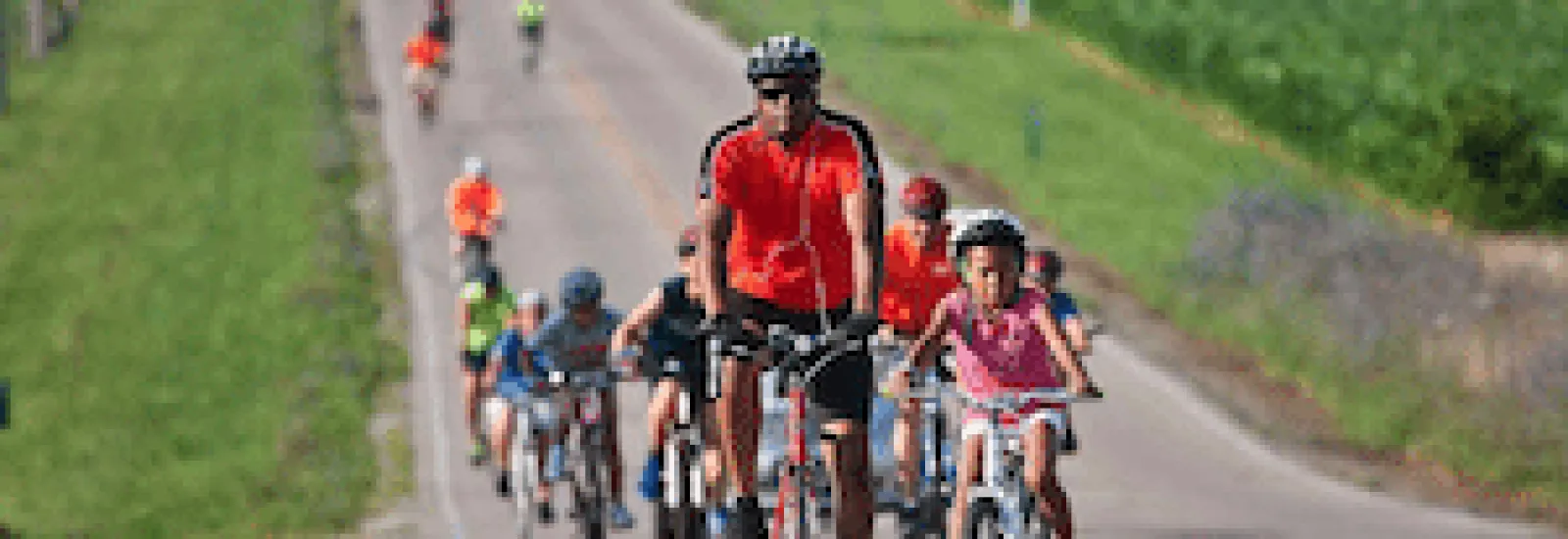
Bike safety for kids: Four tips for the road
As the school year ends and temperatures climb spending time outdoors riding bikes playing with friends and running through the sprinklers are irresistible pastimes for our children. Cycling is excellent exercise for the whole family but it’s important that the younger members know about bike safety. Here are four rules of bike safety for kids. Be sure to share with them and keep them safe!
1. Always wear a helmet
The American Academy of Pediatrics strongly recommends the use of helmets for every single bike ride. Accidents can happen at any time and your child should be protected. They also provide some guidelines on which helmet provides the best protection. Such considerations are important but you also have to select a helmet your child will wear! Sometimes it’s hard for a kid to understand why they need to wear a helmet — it’s hot they’re not used to it and maybe their friends aren’t wearing them. Selecting a helmet that features their favorite superhero simulates a cool mohawk or turns your child into a unicorn can motivate them to wear their helmet every time they go for a ride. Another important way to encourage your child to wear a helmet is to wear one yourself — every time you go biking as a family.
2. Follow the rules of the road
Bicycling is more than just a recreational activity it’s your child’s introduction to driving a vehicle. The National Highway Traffic Safety Association (NHSTA) has compiled a helpful list of safe road practices to teach you child. These important tips include riding with the flow of traffic using proper hand signals not weaving in between cars and staying alert to surrounding pedestrians vehicles and road conditions. They also recommend that children younger than 10 use the sidewalk if allowable by local and state laws.
3. Be vigilant about clothing and equipment maintenance
Besides your child’s helmet he or she should have a few key pieces of equipment to improve visibility and safety. According to MedlinePlus clothing should hang close to the body to prevent entanglements in the spokes and chain. The bike should fit the child and they should be able to put their feet on the ground when sitting in the seat. The NHSTA adds that tires should be inflated and brakes should be adjusted properly. Younger children should have coaster brakes rather than hand brakes until they develop the necessary strength in their hands.
If you ride with your children you can model bike safety for them as you ride. Riding bikes in a group can be fun and exciting but it also presents some challenges for younger riders. Even grownups have unintended collisions and equipment failures during a ride. Be sure to have slower riders on the right side of the road so faster riders can pass on the left. Try to have your kids ride straight ahead rather than weaving through other cyclists which can cause collisions. Leaving a good leading distance between you and the next group will give your kids time to stop or pull over if need be. Only ride with two people next to each other at one time.
If your child does have a collision help them out of the road as quickly and safely as possible. Maintain a safe speed at all times so any crashes don’t result in severe injury.
Give your child a chance to practice bike safety for kids at the eighth annual Reid Ride. ReidRide8 is a 22-mile (or 43-mile!) fun ride for families to provide shoes for local children in need. The previous seven rides have resulted in thousands of pairs of donated shoes and thousands of families having fun biking together. Save the date July 23 2016 and visit reidride.org for more information or you can call 765-983-3102.
Image source: Reid Health Foundation


